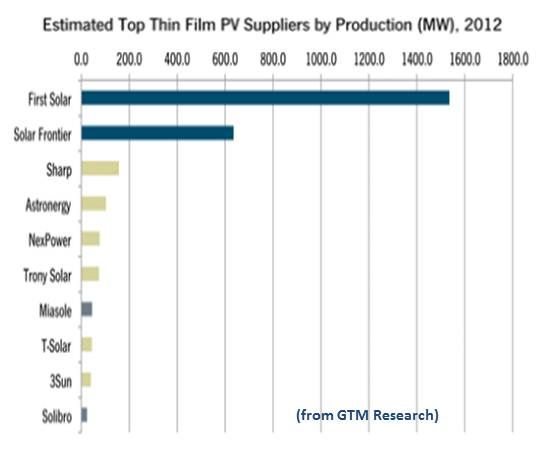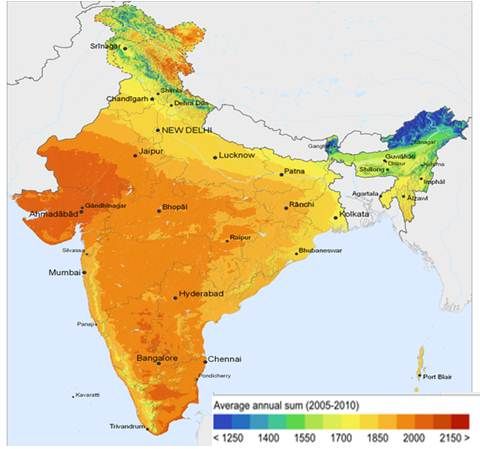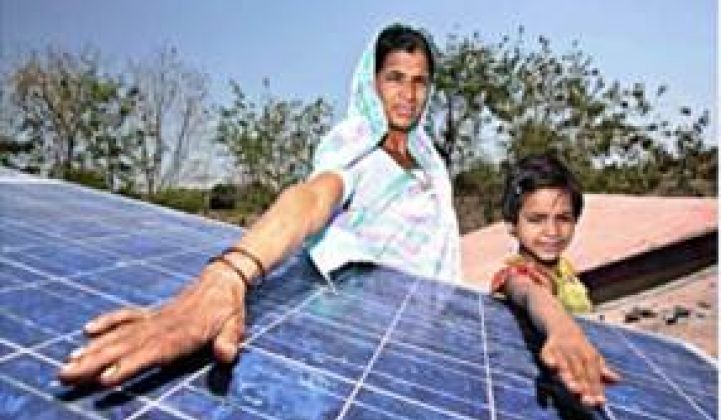Charges that the U.S. is using “its pervert advantage” and “ruining the Indian domestic solar photovoltaic (PV) manufacturing industry” were reported on the website of India’s Center for Science and Environment (CSE) on August 17.
CSE Renewable Energy Head Kushal Yadav reported unsubstantiated claims from “CSE researchers” that 80 percent of India’s PV manufacturing capacity is suffering “forced closure and debt restructuring” as India solar developers place panel orders with U.S. manufacturers. Yadav did not answer GTM's request for documentation. [August 24 update: Subsequent to publication, Yadav provided further documentation of his claims and a follow up to this piece is in preparation.]
"The U.S. Export-Import Bank [Ex-Im] and the Overseas Private Investment Corporation (OPIC) have been offering low-interest loans to Indian solar project developers on the mandatory condition that they buy the equipment, solar panels and cells from U.S. companies,” Yadav quoted CSE deputy director general Chandra Bhushan. “This has distorted the market completely in favor of U.S. companies."
“It’s pretty strong language, and the charges are not based in fact,” was the response of Ex-Im Spokesperson Phil Cogan. “They seem to attach some devious motives to the fact that when we make a loan, the loan can only be made for the acquisition of U.S. goods and services. But that’s what the U.S. Congress requires of us. We exist in order to support the export of goods and services by companies in the United States to foreign buyers. If it doesn’t involve U.S. workers either providing services or providing goods, we are not allowed to finance it.”
“In FY 2011, OPIC and Ex-Im provided $1.3 billion in investments, direct loans, loan guarantees, and insurance to support the deployment of clean energy technologies,” according to the U.S. State Department website, and “it is worth noting that the $1.3 billion of OPIC FY 2011 financing leveraged at least an additional $2.3 billion of private investment.”
India has been a hotbed of solar development since 2010 when it added the Jawaharlal Nehru National Solar Mission (JNNSM) plan for building 22,000 megawatts of solar by 2022, through a feed-in tariff and other incentives, to its National Action Plan on Climate Change.

It has since built nearly 1,000 megawatts of solar. And, subsequent to the recent blackout, adding generation is an even higher priority.
For silicon-based solar panels, the Nehru Solar Mission instituted a domestic content requirement (DCR), stipulating developers must buy India-manufactured solar.
Because early experience seemed to have in instilled in some Indian developers a lack of confidence in the quality of their fledgling silicon panel manufacturers, according to a GTM source who asked not to be identified, they have turned to thin film technology, for which the Nehru program instituted no DCR.
“Close to 60 percent of the panels installed in India are thin film,” Yadav reported, “even though only 14 percent of global capacity is thin film.”
GTM’s source suggested Yadav’s hyperbole is about driving a policy revision imposing a thin film DCR.
Yadav’s researchers called this a “loophole” and said the Ex-Im and OPIC “have been offering very low rates of interest (about 3 percent) and a long repayment schedule (up to eighteen years) to Indian solar project developers on the condition that they buy thin-film panels manufactured by U.S. companies.”
The interest rate and repayment schedule are the result, Ex-Im’s Cogan said, of an international agreement between all the member nations of the Organization for Economic Development and Cooperation (OECD), to which India does not belong.
GTM’s source, who has ongoing business activity in India, agreed with Yadav that, due to severe inflation, interest rates in India are much higher, around 14 percent to 15 percent.

“By agreeing on minimum interest rates and terms, it takes finance off the table so that companies can compete on the basis of the quality and innovation and the service after sale of the products, rather than the preferential financing,” Cogan said. “Companies compete against companies and not against countries.”
The OECD agreement is part of Fast Start Financing, a worldwide program designed in December 2009 by world leaders in service to the United Nations Framework Convention on Climate Change. The goal was to feed $30 billion in financing into developing economies to catalyze private sector funds for renewable energy and emissions mitigating projects.
"The misuse of fast-start financing by the U.S. is unethical,” Yadav quoted CSE’s Bhushan as saying. “Fast-start financing was supposed to benefit the developing country recipient. Instead, the U.S. has managed to turn it into a game.”
Yadav reported $248.3 million in Ex-Im and OPIC investments in India in 2010 and 2011, largely benefiting First Solar and now-bankrupt Abound Solar, as well as two newer loans totaling $57.3 million that will benefit First Solar.
Money, Bhushan was quoted as saying, “goes to projects that promise to buy equipment made in the U.S.” Bhushan went on to say that “Indian manufacturing competition that doesn't have the same government backing” loses out,” continuing on to add, “In the long run, this is doing more harm than good to the Indian solar sector.”
“That part of it is right,” Cogan acknowledged. “We’re only allowed to finance that part of a project or a purchase that involves U.S. goods and services. Otherwise, they have to go somewhere else for their financing. One of the goals that the U.S. Congress has given us is to promote the export of environmentally beneficial goods and services.”
"Interestingly, the U.S. government has put anti-dumping duties on solar equipment imported from China because of the alleged subsidies that China is giving to its solar manufacturers,” Yadav concluded. “However, the U.S. is engaging in a similar practice in India by subsidizing loans for buying American equipment!”




